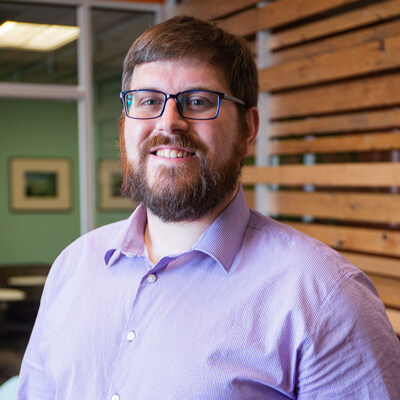Powerful NVIDIA technology is creating new possibilities for architects, engineers and their clients, panelists say in webinar.
BENTONVILLE, Ark., Feb. 14, 2023 /PRNewswire/ — Remotely accessible graphics processors are becoming indispensable tools for forward-thinking architecture and engineering firms, said technologists from HFA Architects & Engineers and NVIDIA in a recent webinar.
“How to Boost Productivity and Accelerate Real-Time Design Collaboration” highlighted the benefits of giving architecture, engineering and construction (AEC) teams remote access to virtual workstations for accelerated graphics processing.
In HFA’s approach, all users’ PCs reside on servers that are then distributed as “virtual” PCs. That means users no longer need to rely on their own machines to process huge volumes of data and host resource-intensive apps like Revit, Enscape and SketchUp, the panelists said.
It’s an important capability given the boundary-pushing use of 3D renderings, high-res imaging and building information modeling (BIM) by architects and engineers, said NVIDIA’s Andrew Rink, a global marketing strategy leader whose focus includes AEC.
With four offices and nearly 400 remote team members, HFA is among those power users testing the limits of NVIDIA’s evolving tools, said panelist and HFA Director of BIM Brittany Pylant. She showed the audience screen-captured footage of interactive and real time-rendered 3D models; cinematic digital animations, and other visualizations created by HFA teams.
“Our HFA technology team has been working closely with our HFA brand team to really push our visualizations to a new level,” Pylant said. “Our clients are asking for one thing, but then we’ll ask, ‘What else can we do with this? How can we break this and keep pushing the boundaries?’ It has allowed our visualization team to grow.”
Panelist John Raines, Director of IT/Systems for HFA, said the company was among the first users of NVIDIA’s virtual graphics-processing unit (vGPU) solutions, starting in 2014. “It goes all the way from the early generation NVIDIA Grid K1 to the most recent A40s and beyond,” he said.
The veteran IT executive recounted an epiphany from the start of that journey.
“I was actually able to pull up a 3D model on a smartphone—I think it was an iPhone 4—and manipulate that model in Revit. I showed this to my director and CIO at the time and everything clicked. They said, ‘Oh, we can really benefit from this.'”
Pointing to “a whole new level of cinema-quality visualization where most people cannot distinguish between renders and reality,” NVIDIA’s Rink said AEC firms reap multiple benefits by supercharging the realism of their models.
“It is not only for design reviews and client presentations,” he said. “It’s earlier in the design process now, helping during iteration on design ideas and to visualize modifications more quickly.”
Rink noted that global firms “increasingly have geographically dispersed architects and designers collaborating on projects all over the world.” For these AEC companies, virtualization leads to less IT downtime and offers better version control and cybersecurity, he said. Graphics acceleration also is accessible from “the home office, on the road or even on a construction site” at a time when architects and engineers are increasingly mobile.
HFA clients benefit from virtualization, Pylant added. In many cases, they would otherwise lack the ability to see advanced 3D models on their own systems.
“Being able to pull this up and be on the same server—so you are not having to download files and remember which one is the latest version and so on—is awesome,” said the BIM director. “We’re screen-sharing with clients and walking them through all of the different possibilities. It’s a really powerful tool, not just at the end of the project but while you’re in design.”
In the conclusion to the hourlong event, Raines described how virtualization helps HFA move forward on another top priority—sustainability.
The approach reduces the overall amount of ewaste generated by HFA. Not only is there less hardware in the company’s data center—and therefore less to eventually end up in a landfill—but the remaining machines or “boxes” can be used for a longer time.
Meanwhile, when architects and engineers need something newer and more powerful, their once-state-of-the-art systems can go to employees with less-intense tech needs.
“Every time we put our power users on a newer, faster piece of hardware, we’re able to upcycle what they were using to other groups, like our administrative personnel or our standard, traditional production users,” Raines said. “So those users still get to have more advanced hardware and more performance than what they were seeing previously—without having to just throw the box away.”
The webinar is available here:
https://www.nvidia.com/en-us/about-nvidia/webinar-portal/?D2C=4049835isSocialSharing=Y&partnerref=emailShareFromGateway&utm_source=email
Media Contacts: At Jaffe Communications, Elisa Krantz, (908) 789-0700,
353722@email4pr.com
.
SOURCE HFA Architects & Engineers



